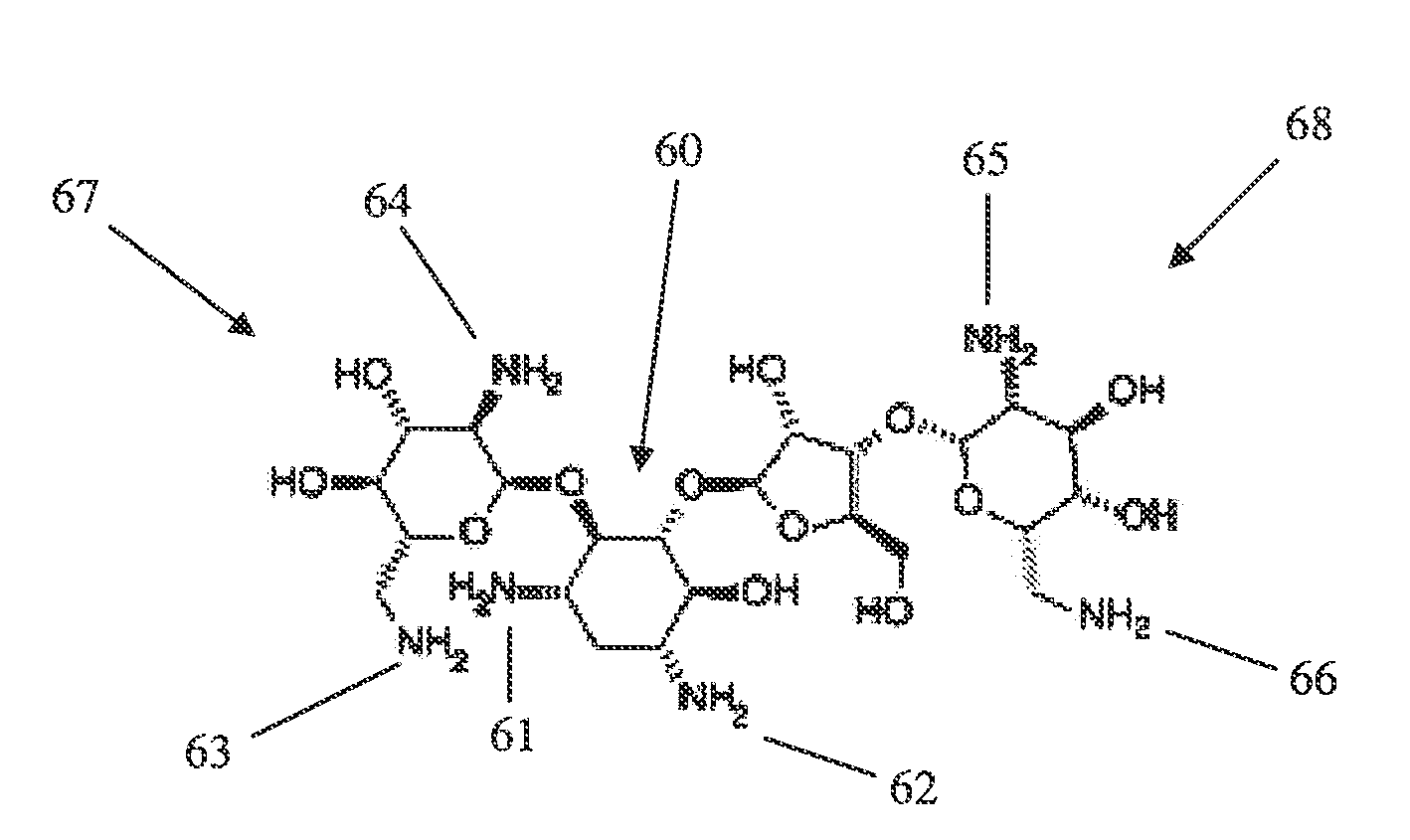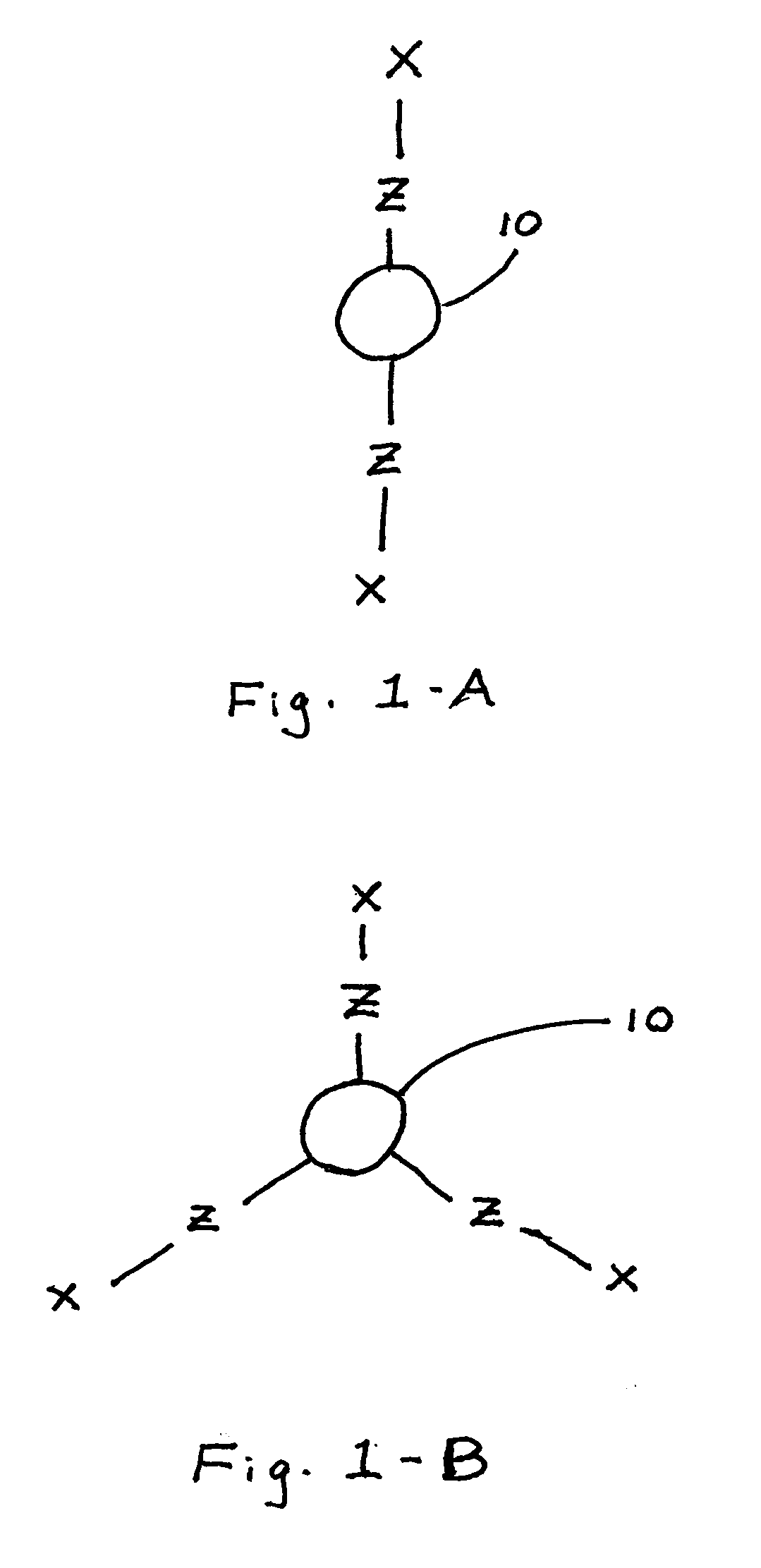Hydrogel Materials
a technology of hydrogel and polymerization, applied in the field of hydrogel materials, can solve the problems of affecting the formation and curing of hydrogel materials, and affecting the curing effect of hydrogel materials. , to achieve the effect of thorough curing and rapid gelation
- Summary
- Abstract
- Description
- Claims
- Application Information
AI Technical Summary
Benefits of technology
Problems solved by technology
Method used
Image
Examples
example 1
[0051]This example describes formation of a material of the present invention. Polyethylene glycol succinimidyl succinate (molecular weight 2000; SunBio, Inc.), a polyelectrophilic PEG having two succinimidyl esters, was dissolved at a concentration of 0.2 g / ml in a sodium phosphate buffer solution, pH 5.0. 100 μl of this solution was placed into the bottom of a test tube and stirred with a magnetic mixing bar. Polymyxin B nonapeptide (Sigma), a polynucleophilic cyclic polypeptide comprising five amines, was dissolved at a concentration of 37 mg / ml in a sodium borate buffer solution, pH 9.5. 100 μl of this solution was added to the test tube with stirring from the magnetic mixing bar to provide a 1:1 stoichiometry of electrophilic groups:nucleophilic groups. The mixture formed a hydrogel within thirty seconds (30 sec. cure).
example 2
[0052]This example describes formation of a material of the present invention. Polyethylene glycol succinimidyl glutarate (molecular weight 3400; SunBio, Inc.), a polyelectrophilic PEG having two succinimidyl esters, was dissolved at a concentration of 0.4 g / ml in a sodium phosphate buffer solution, pH 5.0. 100 μl of this solution was placed into the bottom of a test tube and stirred with a magnetic mixing bar. Colistin sulfate (Sigma), a polynucleophilic cyclic polypeptide having five amines, was dissolved at a concentration of 79 mg / ml in a sodium borate buffer solution, pH 9.5. 100 μl of this solution was added to the test tube with stirring from the magnetic mixing bar to provide a 1:1 stoichiometry of electrophilic groups:nucleophilic groups. The mixture formed a hydrogel within three seconds (3 sec. cure).
example 3
[0053]This example describes formation of a material of the present invention. Polyethylene glycol succinimidyl glutarate (molecular weight 3400; SunBio, Inc.), a polyelectrophilic PEG having two succinimidyl esters, was dissolved at a concentration of 0.3 g / ml in a sodium phosphate buffer solution, pH 5.0. 100 μl of this solution was placed into the bottom of a test tube. Colistin sulfate (Sigma), a polynucleophilic cyclic polypeptide having five amines, was dissolved at a concentration of 58 mg / ml in a sodium borate buffer solution, pH 9.5. 100 μl of this solution was added to the test tube with vortexing to provide a 1:1 stoichiometry of electrophilic groups:nucleophilic groups. The mixture formed a hydrogel within one second (1 sec. cure).
PUM
| Property | Measurement | Unit |
|---|---|---|
| molecular weight | aaaaa | aaaaa |
| molecular weight | aaaaa | aaaaa |
| molecular weight | aaaaa | aaaaa |
Abstract
Description
Claims
Application Information
 Login to View More
Login to View More - R&D
- Intellectual Property
- Life Sciences
- Materials
- Tech Scout
- Unparalleled Data Quality
- Higher Quality Content
- 60% Fewer Hallucinations
Browse by: Latest US Patents, China's latest patents, Technical Efficacy Thesaurus, Application Domain, Technology Topic, Popular Technical Reports.
© 2025 PatSnap. All rights reserved.Legal|Privacy policy|Modern Slavery Act Transparency Statement|Sitemap|About US| Contact US: help@patsnap.com



